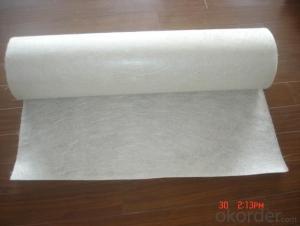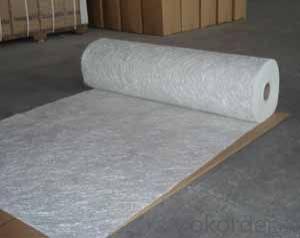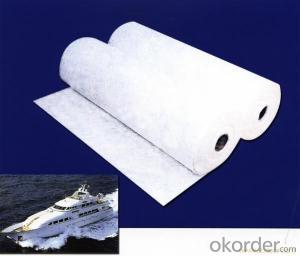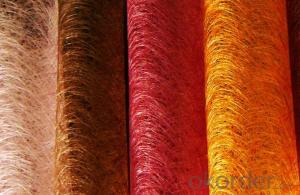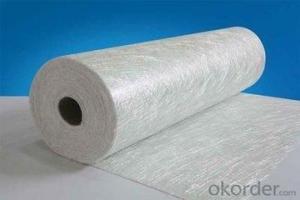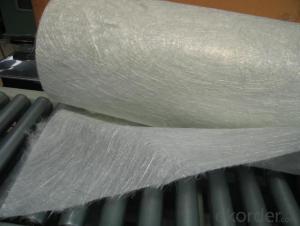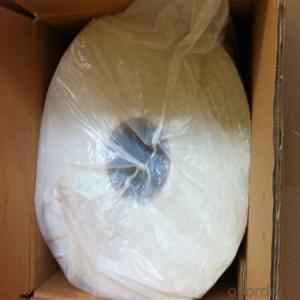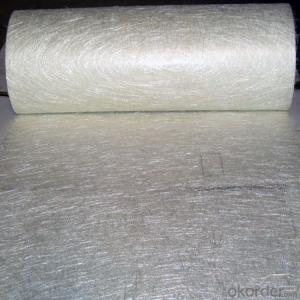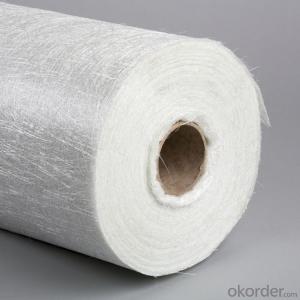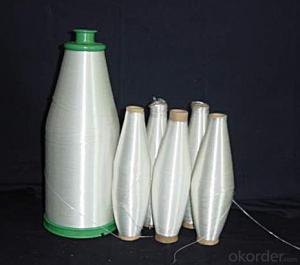2015 AR Chopped Strand Fibreglass in China
- Loading Port:
- Tianjin
- Payment Terms:
- TT OR LC
- Min Order Qty:
- 100 m.t.
- Supply Capability:
- 20000 m.t./month
OKorder Service Pledge
OKorder Financial Service
You Might Also Like
Quick Details
| Place of Origin: | Hebei, China (Mainland) | Brand Name: | Yuniu | Model Number: | thermoplastic Chopped Strands |
| Application: | thermoplastic | Surface Treatment: | silane | Technique: | chopping |
| Length: | 3-22mm | Quality: | Perfect | Certificate: | ISO9001:2000 |
| Color: | White |
Packaging & Delivery
| Packaging Details: | bag, pallet |
| Delivery Detail: | 7 days after the payment |
Specifications
Glass fibre Chopped Strands for concrete are designed for reinforcing PP, PA,PET, PBT POM, PPS and PC
Glass fibre Chopped Strands mainly used in injection and compression molding processes and its typical end-use applications include automotive industry, home appliances, valves, pump housings, chemical corrosion resistance and sports apparatus.
Product Features
1.Good strand integrity, low static and good flowability;
2.Fast and uniform distribution in resins, good processing properties and good mechanical
properties of the end products;
3.Good bonding with resins. No fiber sticking out at the surface of the end products and aesthetic
appearance.
Technical parameters
Filament Diameter(%): ±10
Moisture Content(%): ≤0.10
Size Content(%): 0.75±0.20
Chop Length (mm): ±1.0
Chop ability(%): ≥98
Packaging
Glass fibre Chopped Strands can be packed in bulk bags, cardboard boxes or composite plastic woven bags;
Bulk bags can hold 500kg~1000kg each;
Cardboard boxes and composite plastic woven bags can hold 15kg~25kg each.
Storage
Unless otherwise specified, fiberglass products should be stored in a dry, cool and rain-proof area. It is recommended that the room temperature and humidity should be always maintained at 15-35,35%-65% respectively.
Picture
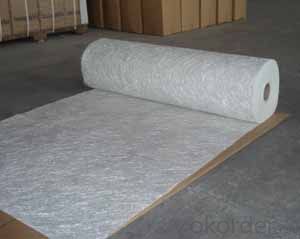
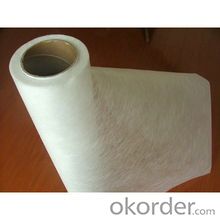
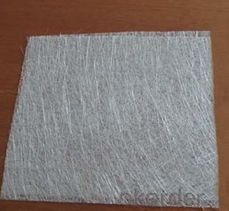
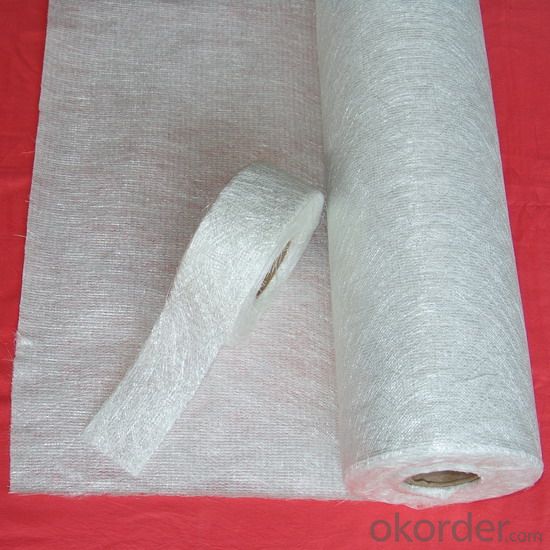
- Q:Is fiberglass chopped strand suitable for aerospace interior components?
- Indeed, aerospace interior components can be made from fiberglass chopped strand, which is a suitable material. Fiberglass, a lightweight and durable substance, possesses an excellent strength-to-weight ratio, making it an ideal choice for aerospace applications. The manufacturing of interior components, such as panels, partitions, and cabin linings, frequently involves the utilization of chopped strand fiberglass. This material offers good mechanical properties, including high tensile strength and impact resistance, which are crucial for ensuring the safety and performance of aerospace interiors. Furthermore, fiberglass is fire-resistant and capable of meeting the stringent fire safety requirements of the aerospace industry. Consequently, fiberglass chopped strand is a dependable and widely utilized material for aerospace interior components.
- Q:What are the typical processing challenges when using fiberglass chopped strand composites?
- There are several common processing challenges that may arise when using fiberglass chopped strand composites. One of the main challenges is ensuring consistent dispersion of the fibers throughout the composite material. Due to the short lengths of the fibers, it can be difficult to evenly distribute them within the resin matrix. This can result in areas with low fiber content, leading to reduced mechanical properties and potential weaknesses in the final product. Another challenge is managing the processing temperature. Fiberglass chopped strand composites typically require higher temperatures compared to other materials. This poses challenges in terms of selecting suitable processing equipment and maintaining the temperature within the optimal range throughout the manufacturing process. Failure to control the temperature can result in poor resin flow, incomplete curing, or even degradation of the fibers. Moreover, the abrasive nature of fiberglass can cause increased wear and tear on processing equipment. The sharp edges of the chopped fibers can lead to excessive wear on molds, dies, and other components of the production machinery. Regular maintenance and replacement of parts are necessary, adding to the overall complexity and cost of the manufacturing process. Additionally, handling and storing chopped strand composites can be challenging. The fibers are prone to breakage and tangling, making it difficult to handle and feed them into the processing equipment. Proper storage conditions, such as maintaining low humidity levels, are crucial to prevent moisture absorption by the fibers, which can negatively impact their performance and adhesion to the resin matrix. Lastly, achieving consistent and reliable bonding between the fibers and the resin matrix can be a challenge. The short lengths of the chopped fibers make it more difficult to establish a strong bond, resulting in reduced mechanical strength and potential delamination issues in the final product. Special attention must be given to the resin formulation and processing parameters to ensure optimal adhesion between the fibers and the matrix. In conclusion, fiberglass chopped strand composites offer numerous advantages, but they also present several processing challenges that require careful attention to achieve high-quality and reliable end products.
- Q:Can fiberglass chopped strand be used in thermal insulation materials?
- Yes, fiberglass chopped strand can be used in thermal insulation materials. Fiberglass is a versatile material that has excellent thermal insulation properties. The chopped strands can be mixed with other materials, such as resins or binders, to create insulation products that are used in a variety of applications such as walls, roofs, and pipes. The fibers in the chopped strand form a network that traps air, which helps to reduce heat transfer and improve energy efficiency. Additionally, fiberglass is non-combustible and does not release toxic gases when exposed to high temperatures, making it a safe choice for thermal insulation materials.
- Q:What are the typical water absorption characteristics of chopped strand composites?
- Various factors, including the type of resin, fiber content, manufacturing process, and composite quality, can affect the water absorption characteristics of chopped strand composites. Generally, chopped strand composites have lower water absorption rates compared to other composites. The water absorption of chopped strand composites primarily depends on the resin matrix. Resins like polyester, vinyl ester, and epoxy are commonly used and have inherent water resistance properties. These resins create a barrier that restricts water penetration into the composite structure, resulting in low water absorption rates. The fiber content also influences water absorption. A higher fiber content enhances resistance to water absorption by increasing overall density and reducing resin content. The fibers reinforce the composite, creating a more impermeable structure. The manufacturing process and composite quality are also important factors. Proper curing and consolidation ensure a dense and well-bonded composite structure, reducing the potential for water absorption. Additionally, the presence of voids, delaminations, or defects in the composite can increase water absorption by providing pathways for water infiltration. It is important to note that although chopped strand composites have relatively low water absorption, they are not completely impervious to water. Prolonged exposure or immersion in water under high pressure can still result in some water absorption. Therefore, considering the intended application and implementing appropriate measures to protect the composite from excessive water exposure, such as using coatings or sealants, is crucial.
- Q:How is the dimensional stability of fiberglass chopped strand maintained?
- The dimensional stability of fiberglass chopped strand is primarily maintained through the use of proper manufacturing techniques and specific additives. During the manufacturing process, the glass fibers are carefully aligned and distributed evenly throughout the composite material. This ensures that the fibers are evenly dispersed, minimizing any potential shrinkage or expansion that may occur. Furthermore, the use of specific additives, such as binders and sizing agents, also contributes to the dimensional stability of fiberglass chopped strand. These additives help to improve the adhesion between the glass fibers and the matrix material, creating a strong bond that reduces the risk of dimensional changes over time. Additionally, the proper curing and cooling processes further enhance the dimensional stability of fiberglass chopped strand. By applying controlled heat and pressure during the curing process, the composite material is able to set and solidify in a way that minimizes any potential distortions or changes in shape. Proper cooling techniques are also employed to ensure that the composite material retains its desired dimensions. Overall, a combination of manufacturing techniques, additives, and curing processes are employed to maintain the dimensional stability of fiberglass chopped strand. These measures help to ensure that the composite material remains structurally sound and retains its intended shape over time.
- Q:Can fiberglass chopped strand be used in the production of insulation materials?
- Yes, fiberglass chopped strand can be used in the production of insulation materials. Fiberglass chopped strand is typically made from fine fibers of glass that are randomly chopped into short lengths. These chopped strands can be used as reinforcement in various materials, including insulation materials. The fiberglass strands help to improve the strength, durability, and thermal performance of the insulation. Additionally, fiberglass chopped strand can also enhance the fire resistance of insulation materials, making them more suitable for applications where fire safety is a concern.
- Q:How does the fiber-matrix adhesion of fiberglass chopped strand affect the performance of composites?
- The overall performance of composites is heavily influenced by the adhesion between the fiberglass chopped strand and the matrix. Several important properties, such as mechanical strength, durability, and resistance to various environmental factors, are directly affected by the adhesion between the fibers and the matrix. To begin with, a robust fiber-matrix adhesion greatly strengthens the composite material mechanically. When there is a strong bond between the matrix and the fibers, stress can be efficiently transferred from the matrix to the fibers, resulting in improved load-bearing capabilities. This adhesion prevents the fibers from slipping or being pulled out of the matrix, thereby increasing the composite's resistance to deformation and enhancing its overall structural integrity. Moreover, a high fiber-matrix adhesion facilitates better energy transfer between the fibers and the matrix, leading to enhanced impact resistance. This is particularly important in applications where the composite is subjected to dynamic loads or impacts, such as in the automotive or aerospace industries. A strong adhesion between the fibers and the matrix allows the composite to absorb and dissipate energy more effectively, reducing the risk of failure or damage. Furthermore, the durability of composites is influenced by the adhesion between the fibers and the matrix. A good adhesion can prevent moisture or other environmental factors from penetrating the interface between the fibers and the matrix, reducing the risk of delamination or degradation. This ensures that the composite retains its properties over an extended period, making it suitable for long-term applications. Additionally, the fiber-matrix adhesion plays a role in the composite's resistance to various chemicals and corrosion. A strong bond between the fibers and the matrix can prevent chemical substances from penetrating the interface and causing damage to the composite. This enables the material to withstand exposure to harsh chemicals, acids, or alkalis, making it suitable for applications in corrosive environments. In conclusion, the fiber-matrix adhesion of fiberglass chopped strand has a significant impact on the performance of composites. A strong adhesion enhances the mechanical strength, impact resistance, durability, and resistance to chemicals and corrosion. Therefore, it is crucial to optimize the fiber-matrix adhesion in order to maximize the performance and reliability of composite materials.
- Q:What is the typical length of fiberglass chopped strand?
- The typical length of fiberglass chopped strand can vary depending on the specific application or industry it is being used in. However, the most commonly used lengths range from 1/8 inch (3 mm) to 1 inch (25 mm).
- Q:Is fiberglass chopped strand compatible with different post-processing techniques?
- Yes, fiberglass chopped strand can be used with different post-processing techniques. Chopped strand mat (CSM) made from fiberglass is a flexible material that can be utilized in a range of applications and post-processing techniques. It can be easily molded and shaped into various forms, making it suitable for processes such as compression molding, resin transfer molding (RTM), and hand lay-up. Moreover, fiberglass chopped strand is also compatible with post-processing techniques like vacuum infusion, filament winding, and pultrusion. These techniques involve saturating the fiberglass with resin, which reinforces and strengthens the material. The compatibility of chopped strand with these techniques ensures its effective utilization in industries such as automotive, aerospace, construction, and marine. Additionally, fiberglass chopped strand can be coated or laminated with different materials to enhance its properties. This allows for customization and optimization of the material for specific applications. Coating the chopped strand with resins, paints, or other protective layers can improve its resistance to chemicals, UV radiation, and moisture. Laminating it with other materials like carbon fiber or Kevlar can enhance its strength and stiffness. In conclusion, fiberglass chopped strand is highly compatible with various post-processing techniques, making it a versatile material with a wide range of applications. Its compatibility allows for customization, optimization, and reinforcement, making it an ideal choice for industries requiring durable and robust materials.
- Q:How to make glass fiber mould
- Glass fiber used for producing glass roving is 12~23 m in diameter. Roving the number from 150 to 9600 (Tex).
1. Manufacturer Overview |
|
|---|---|
| Location | |
| Year Established | |
| Annual Output Value | |
| Main Markets | |
| Company Certifications | |
2. Manufacturer Certificates |
|
|---|---|
| a) Certification Name | |
| Range | |
| Reference | |
| Validity Period | |
3. Manufacturer Capability |
|
|---|---|
| a)Trade Capacity | |
| Nearest Port | |
| Export Percentage | |
| No.of Employees in Trade Department | |
| Language Spoken: | |
| b)Factory Information | |
| Factory Size: | |
| No. of Production Lines | |
| Contract Manufacturing | |
| Product Price Range | |
Send your message to us
2015 AR Chopped Strand Fibreglass in China
- Loading Port:
- Tianjin
- Payment Terms:
- TT OR LC
- Min Order Qty:
- 100 m.t.
- Supply Capability:
- 20000 m.t./month
OKorder Service Pledge
OKorder Financial Service
Similar products
New products
Hot products
Related keywords
